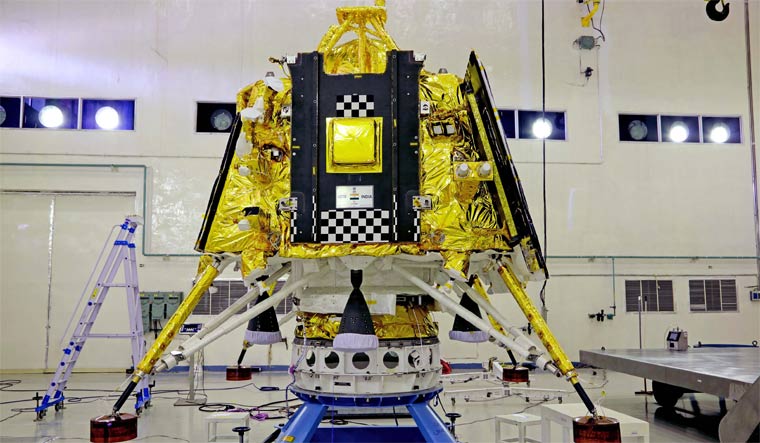Russia has a new Moon lander Luna-25, in a race in space with Chandrayaan-3

The main objective of the mission will be the development of soft-landing technologies, research of the internal structure of the Moon and exploration for resources, including water. Photo: dailyO
Russia is gearing up for the launch of Luna-25, a lunar lander scheduled for August 11 (Friday). This mission marks Russia's reentry into lunar exploration after an absence of nearly half a century, dating back to 1976.
Weighing approximately 800kg and equipped with four legs, the lander is aimed at executing a controlled landing at the Moon's southern pole (similar to Chandrayaan-3's intended landing site).
The key objectives of this mission encompass scientific inquiries, collection of soil samples, and refinement of soft landing techniques.
Luna 25 translated launch kit:
— TitaniumSV5 (@TitaniumSV5) August 7, 2023
Source: Roscosmos pic.twitter.com/LX447NgW3h
'Clearing a village'
-
The launch is slated to take place from the Vostochny Cosmodrome, situated 5,550 km east of Moscow.
-
As a precautionary measure, the inhabitants of a village in the Shakhtinskyi settlement in Russia’s Khabarovsk region, located southeast of the launch site, will undergo evacuation from their homes at 7.30 am on Friday.
-
This action is being taken due to a "one in a million chance" that a rocket stage used in the launch of Luna-25 might potentially descend to Earth in that vicinity, as reported by Reuters.
-
The 26 individuals residing in Shakhtinsky will be relocated to a designated area where they can witness the launch and enjoy a complimentary breakfast.
#Luna25 probe has been mated with on the #Fregat upper stage, was carried out correctly in the hangar of the #Vostotchny cosmodrome - Roscosmos press service announced today.
— Karthik Naren / கார்த்திகேயன் (@nkknspace) August 1, 2023
L - 9 days to 🚀 #Луна25 pic.twitter.com/erzjvszR2W

The launch, originally scheduled for October 2021, experienced a delay of approximately two years. The European Space Agency was previously collaborating with Russia's Roscosmos for this mission. However, the agency severed its ties with the project following Russia's involvement in Ukraine.
India's Chandrayaan Mission and Russia's Luna-25
Russia's mission follows closely after India's Chandrayaan launch, which is also aimed at landing on the moon's south pole.
When we consider the timeline of Luna-25, it might narrowly precede or align with Chandrayaan-3's progress. Here's the timeline:
- After its launch on August 11th, the Luna-25 spacecraft will take five days to journey to the moon.
- Subsequently, it will spend 5-7 days in lunar orbit before descending to one of three potential landing sites near the pole.

- In totalling the dates, Russia's Luna-25 could reach the moon sometime between August 21st and August 23rd.
- Notably, India's Chandrayaan is set to touch down on the moon's south pole between August 23rd and 24th.

'Space for all'
Roscosmos affirmed that the two missions would not interfere with one another, as they have distinct planned landing areas.

Furthermore, Chandrayaan-3 is slated to conduct experiments for two weeks, while Luna-25 will be operational on the moon for a year.

